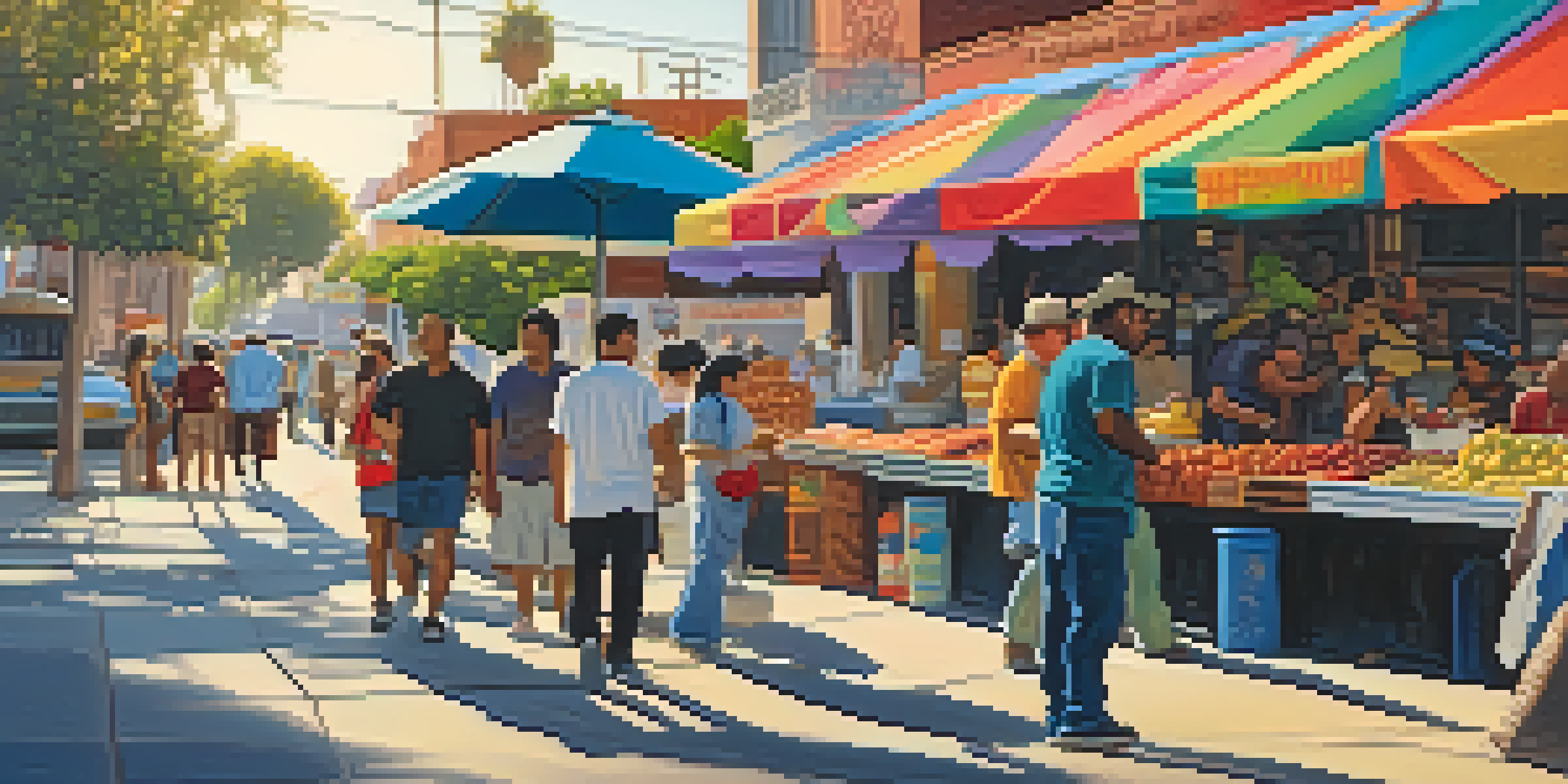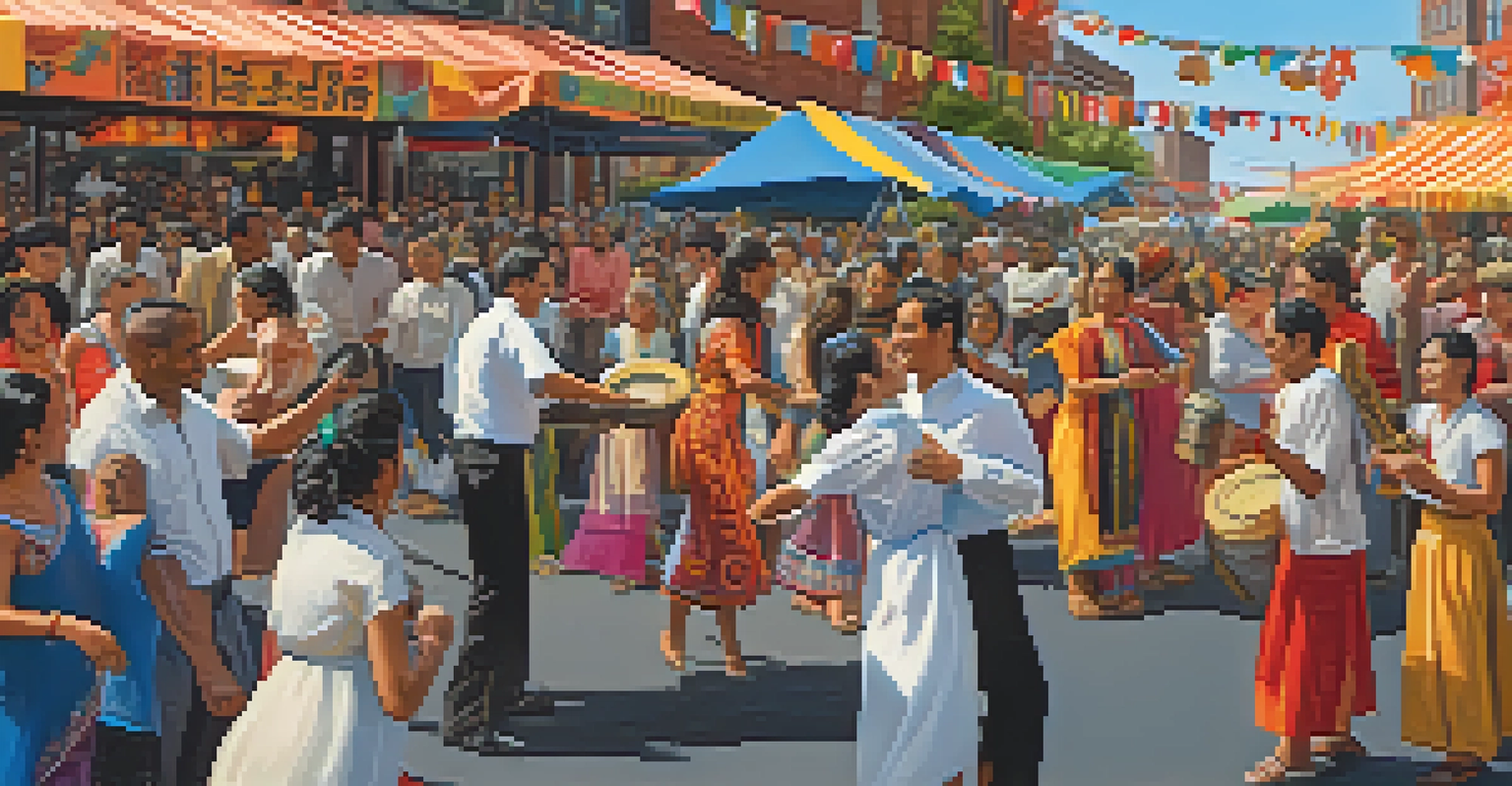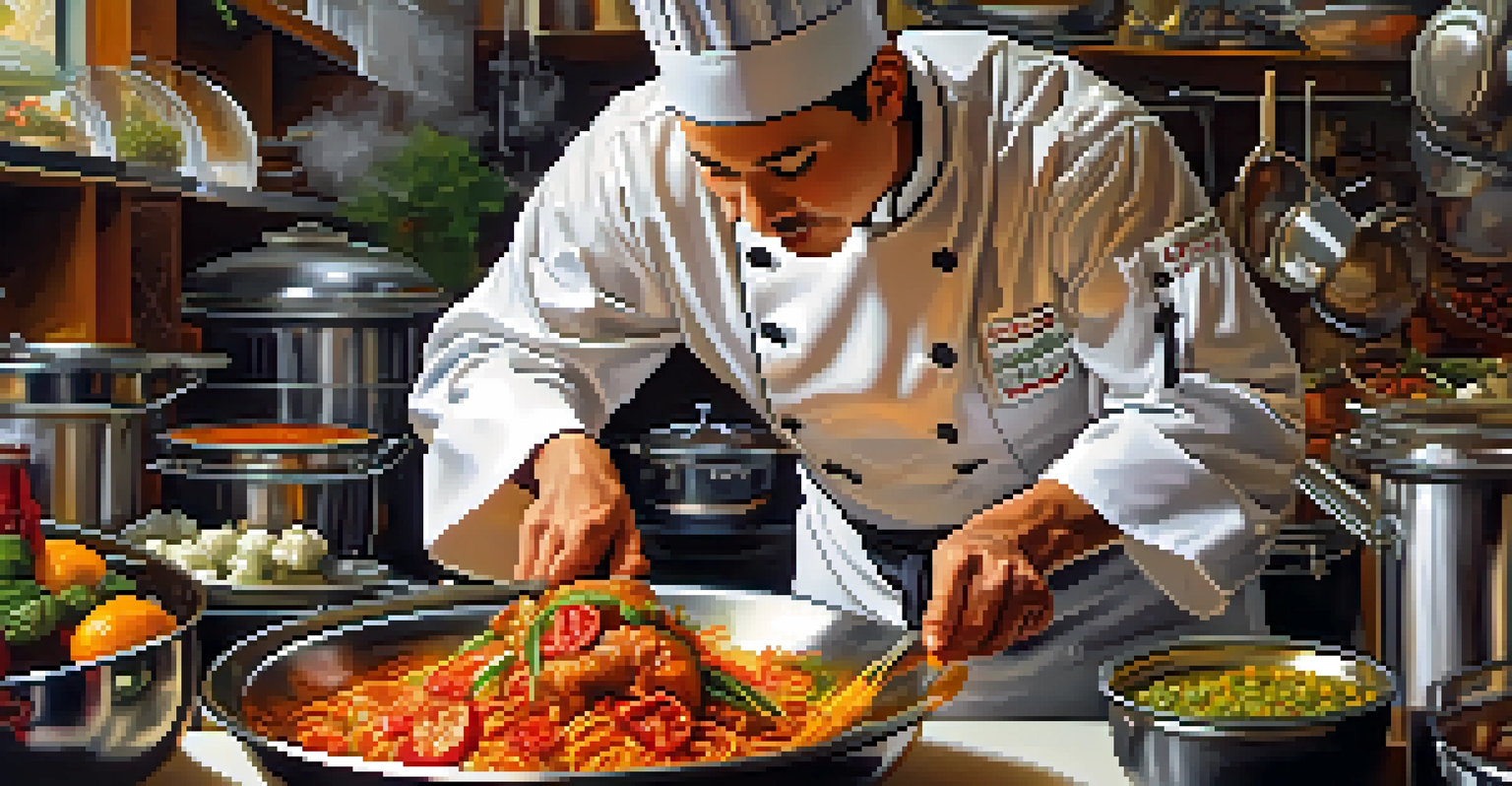The Role of Ethnic Communities in Shaping Urban Culture

Understanding Urban Culture and Its Diversity
Urban culture is a dynamic tapestry woven from various threads of traditions, languages, and lifestyles. Ethnic communities play a crucial role in enriching this culture, bringing their unique perspectives and practices to city life. These diverse backgrounds contribute to a vibrant mix of art, food, music, and festivals, making urban areas more lively and inclusive.
Diversity is not a reason for division; it is a reason for celebration.
For instance, think of a city like Los Angeles, where the influence of Latino culture is palpable in the local cuisine, music, and even street art. The fusion of different cultures creates a unique urban identity that attracts both residents and tourists alike. This blend not only enhances the aesthetic appeal of cities but also fosters a sense of belonging among residents.
Ultimately, urban culture thrives on diversity. The contributions of ethnic communities remind us that our differences can unite us, creating a rich environment where creativity and innovation can flourish.
Culinary Influences from Ethnic Communities
Food is often one of the most visible ways ethnic communities influence urban culture. Each community brings its culinary traditions, creating a melting pot of flavors that define a city’s food scene. From food trucks serving tacos in Austin to dim sum parlors in San Francisco, these eateries often become cultural landmarks.

Consider New York City, renowned for its diverse food offerings influenced by immigrant populations. You can find everything from authentic Italian pizza in Little Italy to mouthwatering Caribbean jerk chicken in Flatbush. These culinary experiences foster connections, allowing people to explore different cultures through their palates.
Urban Culture Embraces Diversity
Urban culture is enriched by the unique traditions and practices of ethnic communities, creating a vibrant and inclusive environment.
As urban areas continue to grow, the culinary contributions of ethnic communities not only enhance local economies but also promote cultural understanding. Sharing meals often leads to shared experiences, bridging gaps and fostering friendships across cultural divides.
Art and Expression in Urban Settings
Art serves as a powerful medium through which ethnic communities express their identity and heritage. Murals, sculptures, and performances often reflect the stories and struggles of these communities, making the urban landscape a canvas of cultural expression. Cities like Chicago are dotted with murals that celebrate the rich history of the city's diverse populations.
The beauty of the world lies in the diversity of its people.
Take, for example, the annual events like the San Francisco International Asian American Film Festival, which showcase the artistic talents of Asian communities. Such events not only highlight cultural narratives but also engage broader audiences in meaningful conversations about identity and representation. This artistic dialogue enriches the urban environment, inviting residents to explore and appreciate different perspectives.
Through art, ethnic communities can challenge stereotypes and promote social change. This creative outlet plays a vital role in shaping the cultural fabric of urban areas, encouraging dialogue and understanding among diverse populations.
Festivals Celebrating Cultural Heritage
Festivals are vibrant celebrations that highlight the traditions and customs of ethnic communities within urban settings. These events often attract large crowds, creating a festive atmosphere that brings people together. From Diwali celebrations in New York to the Chinese New Year parade in San Francisco, these festivals offer a glimpse into the rich cultural tapestries of these communities.
Such events not only provide entertainment but also foster cultural exchange and understanding. Attendees have the opportunity to experience traditional music, dance, and food, deepening their appreciation for different cultures. Moreover, festivals can strengthen community bonds, as they often involve collaboration among various local organizations and residents.
Food Reflects Cultural Richness
Culinary influences from diverse ethnic communities transform urban food scenes into a melting pot of flavors and cultural connections.
In this way, cultural festivals contribute to urban identity, making cities more vibrant and diverse. They serve as a reminder of the beauty of coexistence and the importance of celebrating our differences in a shared space.
Language and Communication in Urban Life
Language is a vital aspect of culture, playing a significant role in shaping urban environments. Ethnic communities often bring their native languages, creating multilingual landscapes that reflect the city's diversity. In neighborhoods like Queens, New York, you can hear a symphony of languages spoken on the streets, enriching the urban soundscape.
This linguistic diversity fosters inclusivity and connection among residents. It also encourages the learning of new languages, promoting cultural exchange and broadening perspectives. For instance, local businesses may advertise in multiple languages, making services accessible to a wider audience and fostering community engagement.
Moreover, language can serve as a bridge or a barrier, depending on how it's embraced. By celebrating linguistic diversity, cities can enhance social cohesion, ensuring that everyone feels valued and understood, regardless of their background.
The Role of Ethnic Communities in Local Economies
Ethnic communities significantly contribute to local economies, driving entrepreneurship and innovation. Many immigrants start businesses that cater to their communities, creating jobs and stimulating economic growth. These establishments, whether it's a grocery store or a restaurant, often become integral parts of the urban landscape.
For example, in cities like Houston, the influx of immigrant entrepreneurs has transformed entire neighborhoods, bringing new life and opportunities. The diverse offerings not only attract local customers but also draw in tourists, further boosting the economy. This entrepreneurial spirit enhances the cultural identity of urban areas, showcasing the resilience and creativity of ethnic communities.
Festivals Unite Urban Communities
Cultural festivals celebrate heritage and foster understanding, bringing diverse residents together in shared experiences.
Supporting these businesses can lead to a thriving local economy while fostering a sense of community pride. When we invest in and celebrate ethnic entrepreneurship, we contribute to a more vibrant and economically stable urban culture.
Challenges Faced by Ethnic Communities in Urban Areas
Despite their contributions, ethnic communities often face significant challenges in urban settings. Issues such as discrimination, gentrification, and limited access to resources can hinder their ability to thrive. Urban development projects sometimes overlook the needs of these communities, threatening their cultural heritage and economic stability.
Take the example of gentrification, where rising rents push out long-standing residents, often erasing the cultural identity of neighborhoods. This can lead to a loss of community, as the unique characteristics that once defined the area are replaced by homogenized developments. Such changes can create tension between new arrivals and established residents, disrupting the fabric of urban life.

Addressing these challenges requires a collective effort from local governments, organizations, and residents. By advocating for policies that support diversity and inclusion, we can work towards creating urban environments that honor and preserve the contributions of ethnic communities.